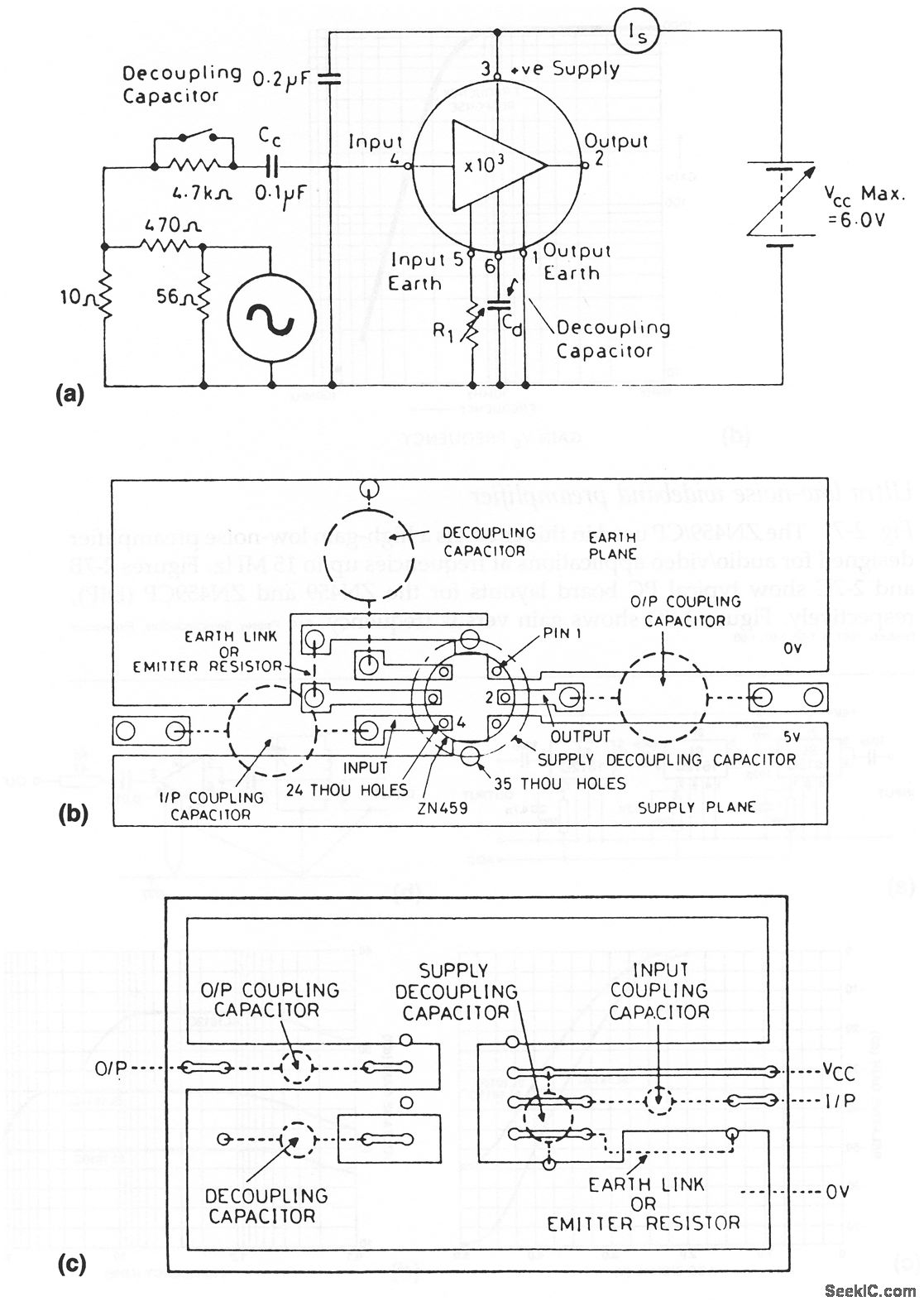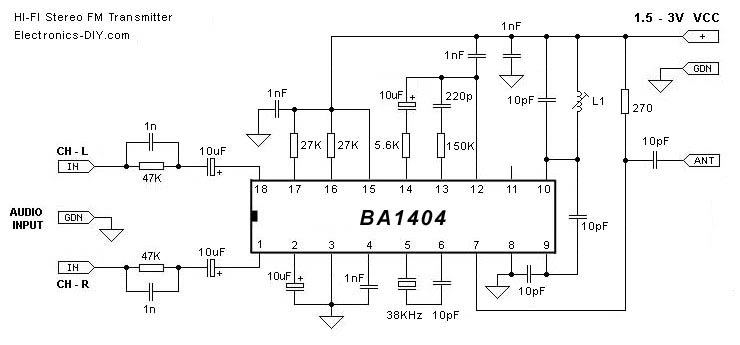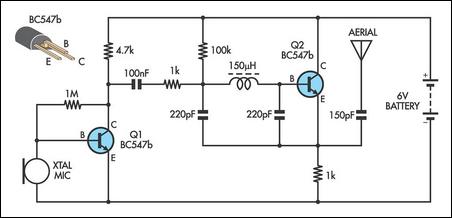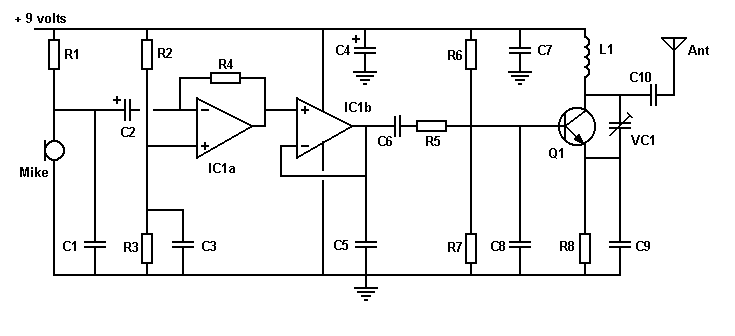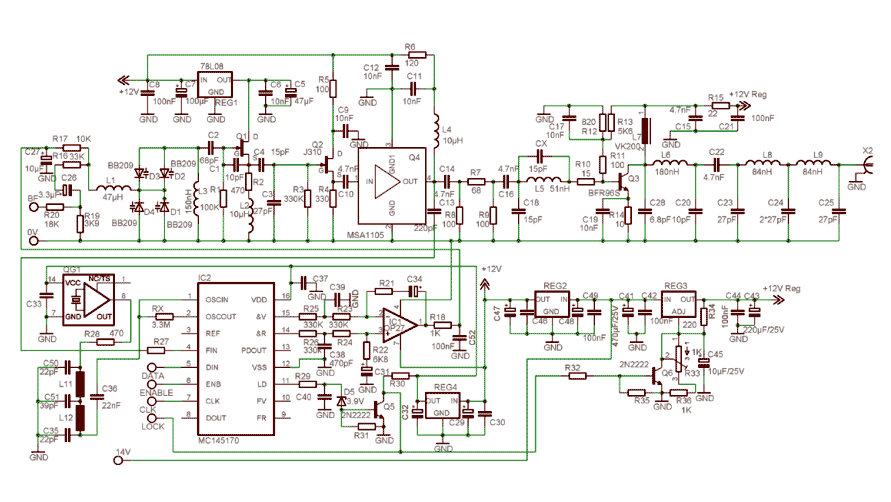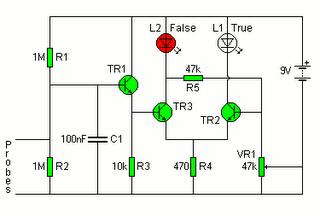
FM voice transmitter for Band 2 VHF
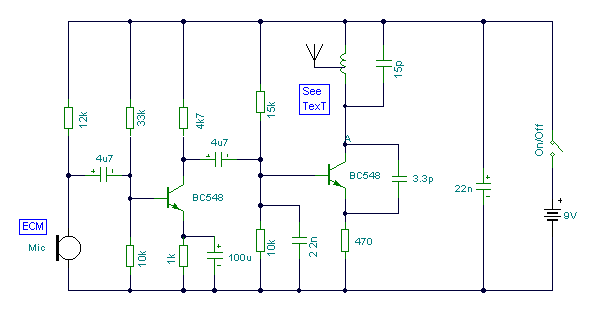
This compact transmitter employs a Hartley oscillator configuration. Typically, the capacitor in the tank circuit connects to the base of the transistor; however, at VHF frequencies, the base-emitter capacitance of the transistor behaves like a short circuit, maintaining its functionality. The coil consists of four turns of 18 SWG wire wound around a quarter-inch former, with the aerial tap positioned approximately one and a half turns from the supply end. Audio sensitivity is notably high when utilized with an ECM-type microphone insert.
The transmitter circuit operates based on the principles of a Hartley oscillator, which is characterized by its ability to generate radio frequency signals. The oscillator consists of an inductor and capacitor forming a resonant tank circuit. In this specific design, the tank circuit is integral to the oscillator's performance, and the choice of components is crucial for achieving the desired frequency stability and output power.
The four turns of 18 SWG wire form the inductor, which is wound around a quarter-inch former. This physical configuration is important as it helps to establish the inductance required for the oscillator to function effectively at VHF frequencies. The use of 18 SWG wire is beneficial due to its balance between resistance and inductance, allowing for efficient energy transfer within the circuit.
The aerial tap, located one and a half turns from the supply end, serves as the point where the RF signal is coupled out to the antenna. This tap is critical for optimizing the transmission efficiency and ensuring that the signal strength is adequate for the intended range. The positioning of the tap can significantly influence the impedance seen by the oscillator, thus affecting the overall performance of the transmitter.
In terms of audio input, the transmitter is designed to work effectively with ECM-type microphones, which are known for their high sensitivity and low noise characteristics. This compatibility enhances the quality of the transmitted audio signal, making it suitable for various applications, such as broadcasting or communication in VHF ranges.
Overall, this small transmitter design demonstrates a practical approach to RF signal generation, leveraging the Hartley oscillator topology and carefully selected component specifications to achieve reliable performance in VHF applications.This small transmitter uses a hartley type oscillator. Normally the capacitor in the tank circuit would connect at the base of the transistor, but at VHF the base emitter capacitance of the transistor acts as a short circuit, so in effect, it still is. The coil is four turns of 18swg wire wound around a quarter inch former. The aerial tap is about one and a half turns from the supply end. Audio sensitivity is very good when used with an ECM type microphone insert. 🔗 External reference
The transmitter circuit operates based on the principles of a Hartley oscillator, which is characterized by its ability to generate radio frequency signals. The oscillator consists of an inductor and capacitor forming a resonant tank circuit. In this specific design, the tank circuit is integral to the oscillator's performance, and the choice of components is crucial for achieving the desired frequency stability and output power.
The four turns of 18 SWG wire form the inductor, which is wound around a quarter-inch former. This physical configuration is important as it helps to establish the inductance required for the oscillator to function effectively at VHF frequencies. The use of 18 SWG wire is beneficial due to its balance between resistance and inductance, allowing for efficient energy transfer within the circuit.
The aerial tap, located one and a half turns from the supply end, serves as the point where the RF signal is coupled out to the antenna. This tap is critical for optimizing the transmission efficiency and ensuring that the signal strength is adequate for the intended range. The positioning of the tap can significantly influence the impedance seen by the oscillator, thus affecting the overall performance of the transmitter.
In terms of audio input, the transmitter is designed to work effectively with ECM-type microphones, which are known for their high sensitivity and low noise characteristics. This compatibility enhances the quality of the transmitted audio signal, making it suitable for various applications, such as broadcasting or communication in VHF ranges.
Overall, this small transmitter design demonstrates a practical approach to RF signal generation, leveraging the Hartley oscillator topology and carefully selected component specifications to achieve reliable performance in VHF applications.This small transmitter uses a hartley type oscillator. Normally the capacitor in the tank circuit would connect at the base of the transistor, but at VHF the base emitter capacitance of the transistor acts as a short circuit, so in effect, it still is. The coil is four turns of 18swg wire wound around a quarter inch former. The aerial tap is about one and a half turns from the supply end. Audio sensitivity is very good when used with an ECM type microphone insert. 🔗 External reference
